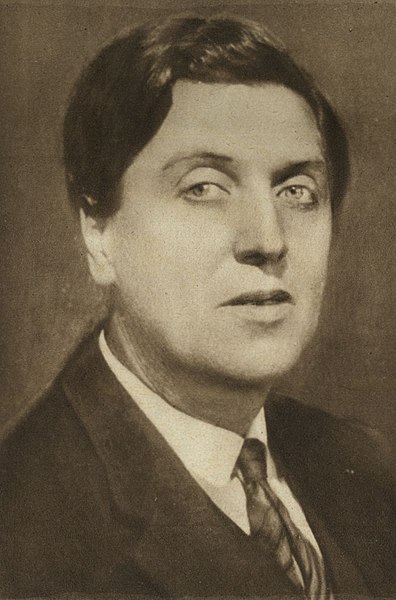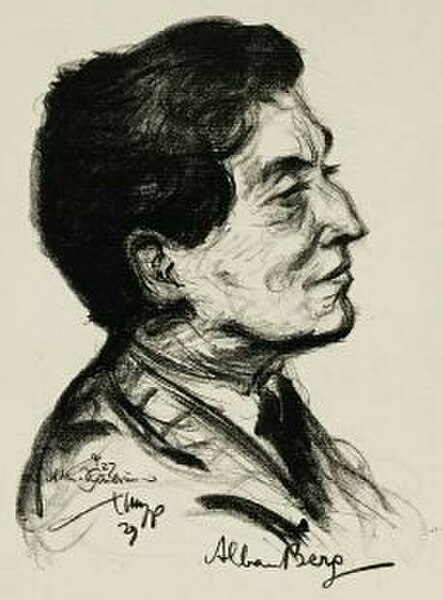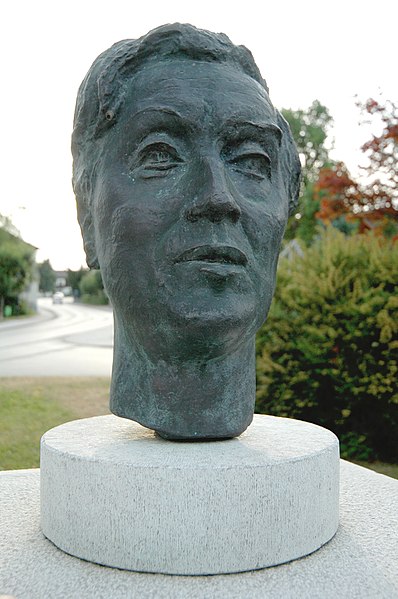Alban Maria Johannes Berg was an Austrian composer of the Second Viennese School. His compositional style combined Romantic lyricism with the twelve-tone technique. Although he left a relatively small oeuvre, he is remembered as one of the most important composers of the 20th century for his expressive style encompassing "entire worlds of emotion and structure".
Berg c. 1930
Watschenkonzert [slapping concert], caricature in Die Zeit [de] (Vienna), 6 April 1913
Sketch of Berg by Emil Stumpp
Bust of Berg at Schiefling am See, Carinthia, Austria
The twelve-tone technique—also known as dodecaphony, twelve-tone serialism, and twelve-note composition—is a method of musical composition first devised by Austrian composer Josef Matthias Hauer, who published his "law of the twelve tones" in 1919. In 1923, Arnold Schoenberg (1874–1951) developed his own, better-known version of 12-tone technique, which became associated with the "Second Viennese School" composers, who were the primary users of the technique in the first decades of its existence. The technique is a means of ensuring that all 12 notes of the chromatic scale are sounded as often as one another in a piece of music while preventing the emphasis of any one note through the use of tone rows, orderings of the 12 pitch classes. All 12 notes are thus given more or less equal importance, and the music avoids being in a key. Over time, the technique increased greatly in popularity and eventually became widely influential on 20th-century composers. Many important composers who had originally not subscribed to or actively opposed the technique, such as Aaron Copland and Igor Stravinsky, eventually adopted it in their music.

Arnold Schoenberg, inventor of twelve-tone technique


![Watschenkonzert [slapping concert], caricature in Die Zeit [de] (Vienna), 6 April 1913](https://upload.wikimedia.org/wikipedia/commons/thumb/7/7d/Watschenkonzert_Karikatur_in_Die_Zeit_vom_6._April_1913.jpg/640px-Watschenkonzert_Karikatur_in_Die_Zeit_vom_6._April_1913.jpg)


